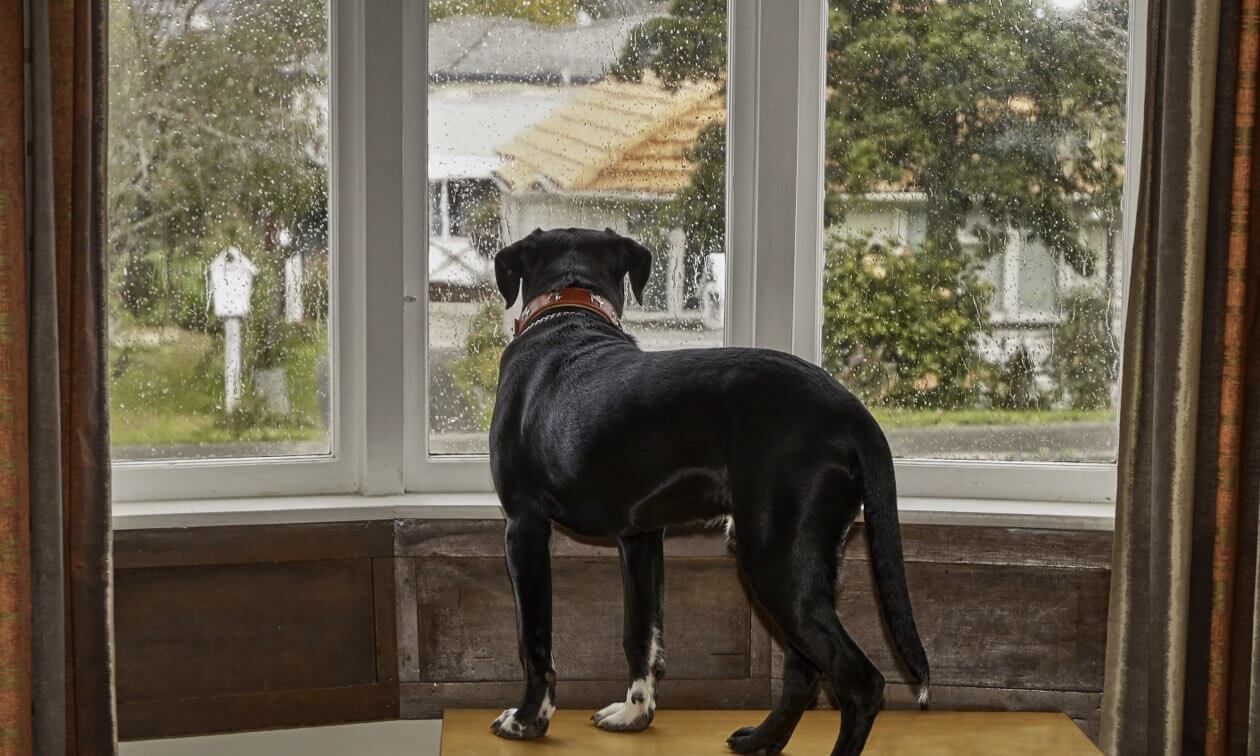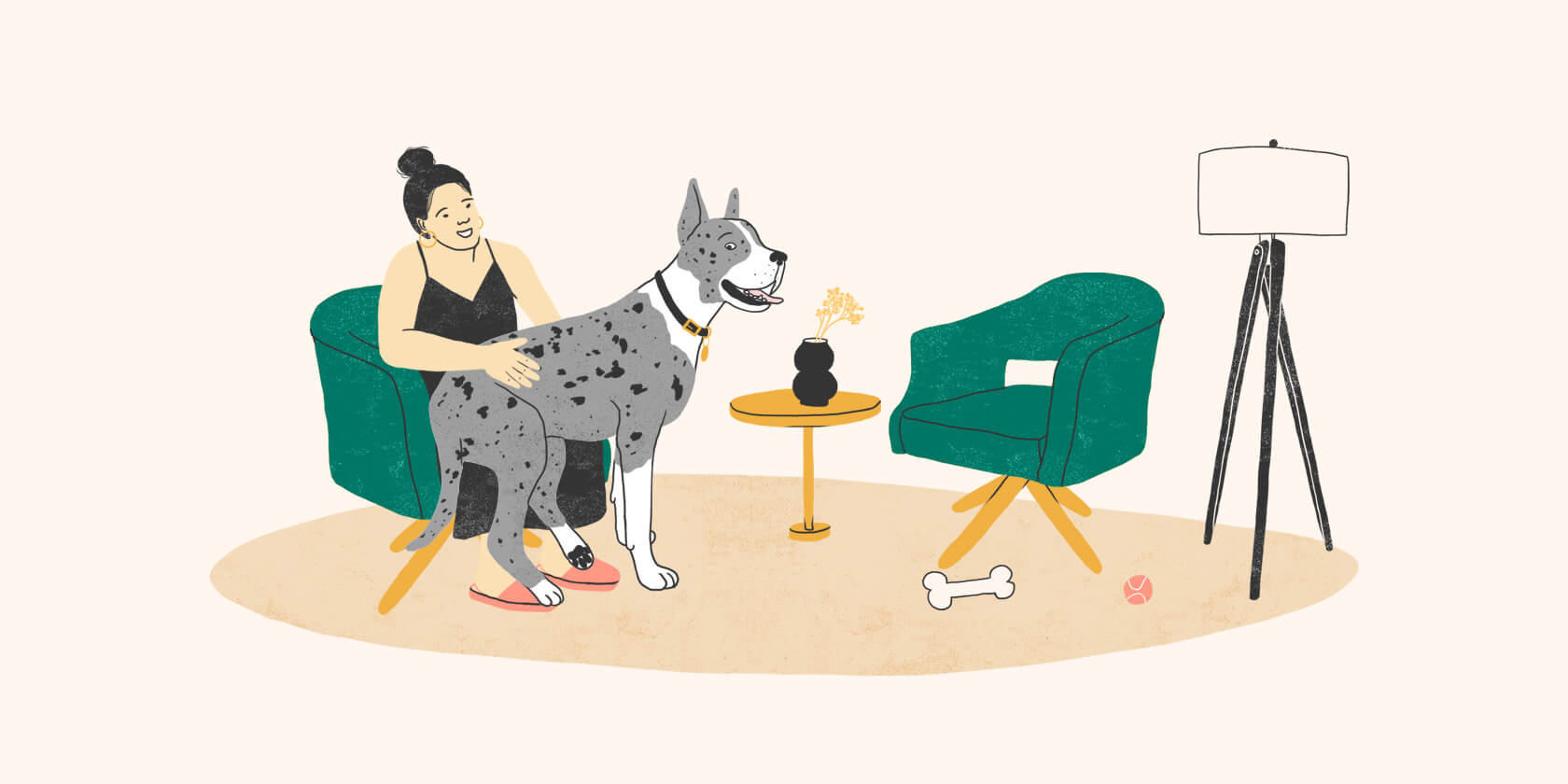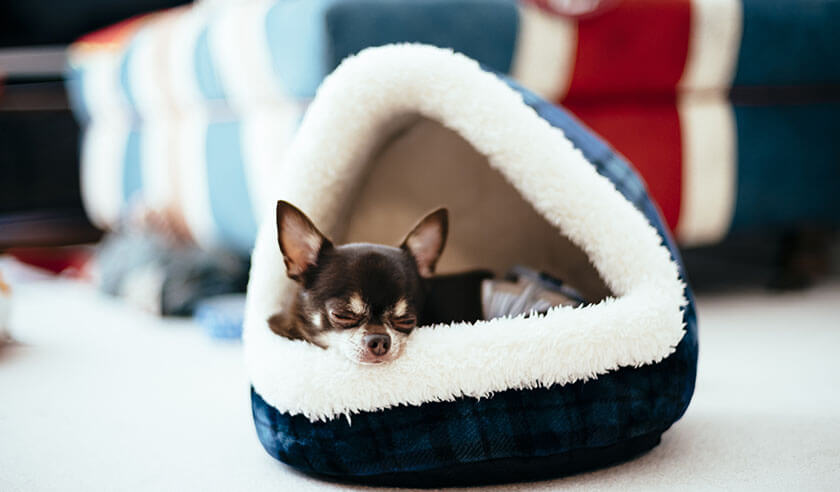Do you constantly come home to a puddle of pee or a gnawed furniture leg? Has a neighbor heard your dog howling up a storm while you’re away? Your dog could be bored — or suffering from separation anxiety. Here’s what you need to know about how to help a dog with separation anxiety, so you can start getting the help that you (and your dog) need.
Symptoms of Separation Anxiety in Dogs
Dogs that are suffering from separation anxiety get distressed and freak out whenever they’re left alone. Here are some of the more common signs you’ll see:
- “Accidents” when they’re already potty-trained
- Vomiting or diarrhea
- Chewing things they shouldn’t be
- Trying to escape by scratching doors or windows
- Whining, barking, or howling
- Yawning, panting, or drooling
- Licking their lips
- Pacing, circling (not able to settle down)
- Trembling
- Chewing or licking their paws or tail
What Causes Separation Anxiety in Dogs?
Some dogs may be more prone to separation anxiety, including:
- Dogs that are extra “clingy” or more dependent on their humans when they’re home, or out-and-about together.
- Dogs that aren’t well socialized.
- Adopted dogs that have been through a lot.
Changes in your dog’s life can also trigger separation anxiety — even if they haven’t had problems with it before. Even changes in your dog’s hearing or eyesight as they get older can lead to anxiety.
Lastly, noises or commotions outside (like a nearby construction project) or an upsetting noise inside your home (like a low battery signal in your smoke detector) could be stressing out your dog when they’re home alone — triggering a bad association between the noise and being all by themselves.
Talk to Your Veterinarian About Treatment Options
There are three ways to help a dog with separation anxiety: environmental management, behavior modification, and pharmaceutical options. Pharmaceutical options include antianxiety medications and nutritional supplements, which can be helpful in reducing your dog’s level of anxiety.
Changes to the Environment Can Help a Dog With Separation Anxiety
While there’s no one-size-fits-all solution, there are lots of things you can try.
Don’t Leave Your Dog Alone
If your dog’s separation anxiety is in overdrive, hire a dog walker, take your dog to work (if allowed), or enroll them in doggie daycare. You could also ask a friend or family member to come by and spend some time with your dog.
Give Them a Safe and Calm Space
Make sure your dog has a special place to hang out when you’re gone. This should be a spot where they feel comfortable and relaxed, even when you’re home. Pheromones, calming supplements, and anti-anxiety compression jackets can sometimes help with separation anxiety. You can also try turning on some soothing music or a “white noise” machine for your dog to listen to when you’re gone.
Skip the Triggers
If you know that certain things set off your dog’s separation anxiety, try to avoid or minimize those triggers. (For example, if opening and closing your garage door when you leave makes them panic, try parking in the driveway.)
Behavior Modification That Can Help With Separation Anxiety
Plan Ahead
Have your dog go to their safe space 10 or 15 minutes before you leave, which can help distract them while you’re getting ready to leave. You can also toss them a treat right before you go, so they can start seeing your departure as a positive.
Break the Habit
Your dog knows when you’re getting ready to leave, which can amp up their anxiety. Try getting your dog used to seeing your departure cues — without the actual departure. For example, grab your car keys, but then sit down and read a book or open the door and then shut it without going outside.
Boost Their Confidence With Training
There are many ways to help an insecure dog feel better about themselves and broaden their horizons. One way is to try clicker training. If your dog is an action hound, agility, nose work, or other types of activity training might work best.
Ask Your Veterinarian
Don’t be afraid to ask your veterinarian about which behavior modification techniques are best for your dog, and for instructions on how to properly implement these techniques.
How to help a dog with separation anxiety will depend on factors like signs of anxiety, causes, and health factors. You veterinarian can help you determine the best course of action to take to help your dog overcome their separation anxiety.
ZPC-00181R2




.jpg)

